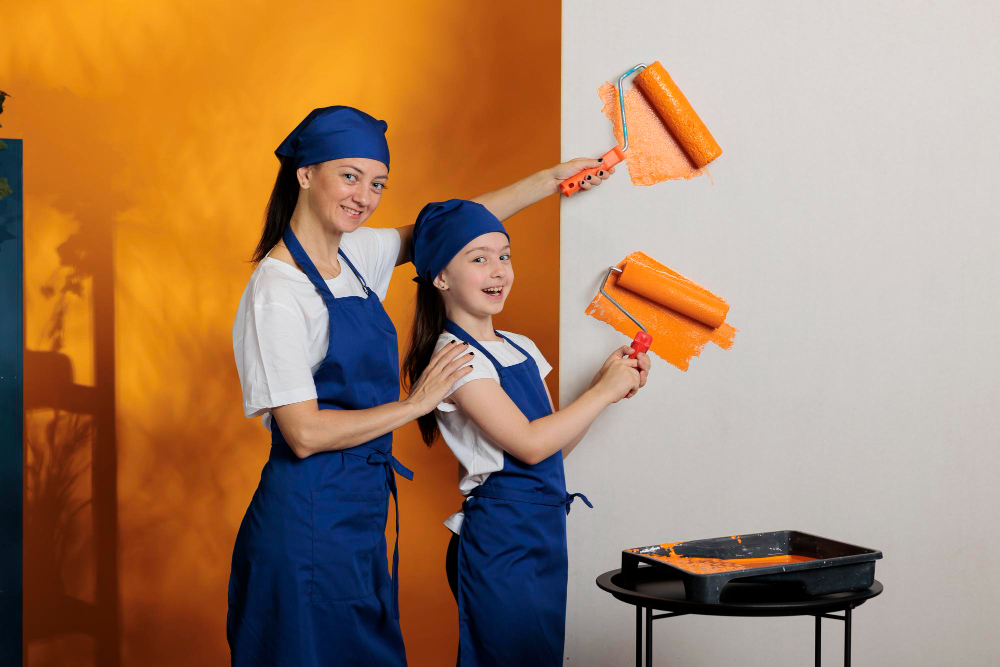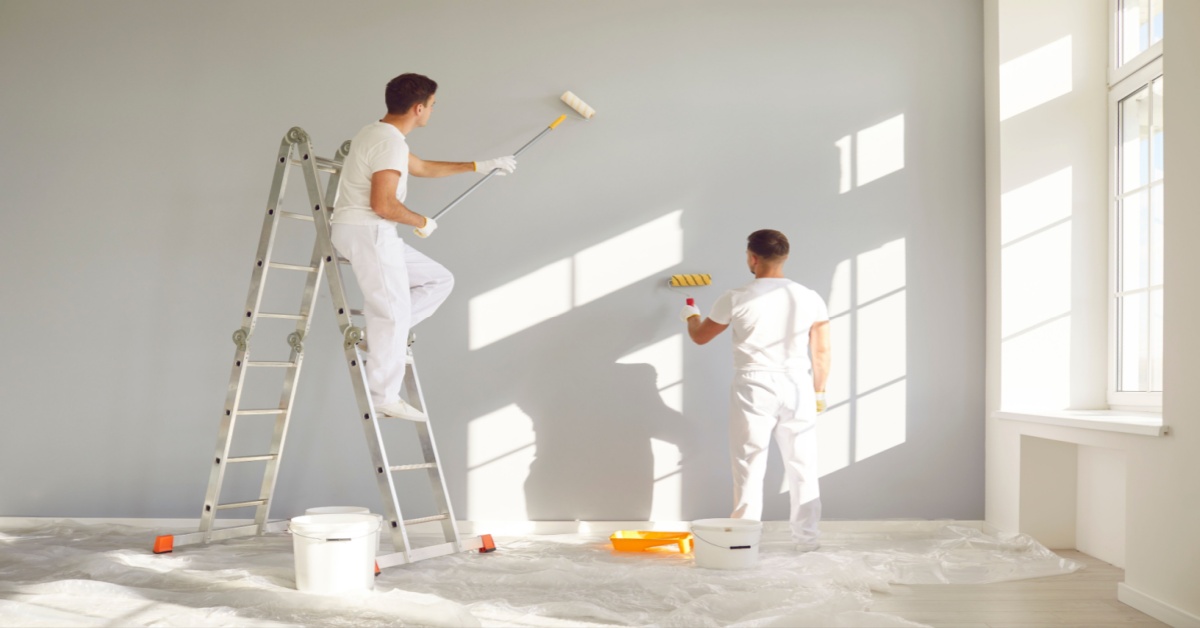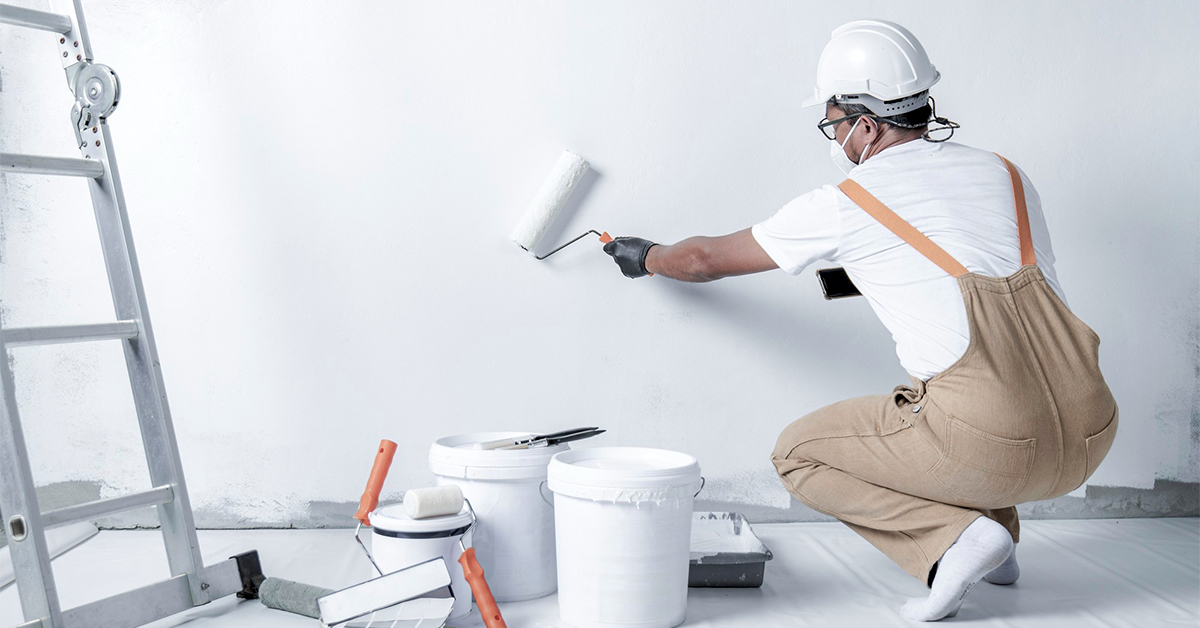Stay Ahead With New Paint Trends: Blending Strategies for Modern Interiors

The Rise of Color Gradients in Interior Decoration
As developers significantly seek ingenious methods to enhance areas, the surge of shade gradients in interior layout has actually gathered considerable interest. This technique, characterized by the smooth shift in between two or even more shades, permits a vibrant visual impact that can transform an average area into a vibrant atmosphere. Color gradients can evoke emotions, influence understandings of area, and develop focal points, making them a flexible selection for various style styles.
The application of slopes extends beyond wall surfaces; they can be properly employed in furniture, textiles, and accessories. Designers often try out differing tones to attain deepness and intrigue, interesting a variety of looks from minimal to diverse. In enhancement, the versatility of slopes allows their use in both business and household settings, catering to diverse clients. As trends evolve, using color gradients indicates a change in the direction of even more expressive and personalized indoor rooms, mirroring specific preferences and way of lives.
Accepting Ombre Techniques for a Dynamic Look
Ombre methods have actually arised as a charming option for those aiming to include depth and movement to modern interiors. This slope impact shifts smoothly from one color to one more, creating an aesthetically striking centerpiece in any kind of area. Designers appreciate ombre for its convenience; it can be related to wall surfaces, furnishings, or perhaps attractive accents, allowing for unique expressions of design.
The technique works especially well with soft colors, giving a calm ambiance, while vibrant shades can stimulate a space. House owners can try out various color combinations, choosing different tones for a remarkable influence or harmonious tones for a refined effect. The application of ombre is not limited to a single wall surface; it can extend throughout a room, improving the assumption of area and light.
As a modern pattern, ombre methods deal with diverse preferences, allowing people to personalize their insides and embrace creative thinking in their design approach. paint store corpus christi tx.
Textured Wall Surfaces: Layering Paint for Depth and Interest
Textured wall surfaces can substantially improve the aesthetic appeal of contemporary interiors by including depth and interest. Strategies for developing appearance, thoughtful color combinations, and the right devices for layering are essential components in accomplishing this impact. Checking out these aspects allows for a customized and dynamic strategy to interior style.
Techniques for Structure Production
Creating aesthetic rate of interest in indoor rooms usually rests on the artful application of structure. Different techniques can be utilized to accomplish this, such as sponging, cloth rolling, and stippling. Sponging involves making use of a wet sponge to use a 2nd color over a skim coat, producing a soft, multicolor effect. Cloth rolling, on the various other hand, uses a rolled rag to use paint, resulting in a much more dynamic texture. Stippling uses a stiff brush or device to dab paint onto the surface, creating a special pattern. In addition, layering various surfaces, such as matte and glossy, can enhance deepness. These methods not only give aesthetic allure yet additionally add to the total setting of modern insides, encouraging a tactile experience.
Shade Mixes for Effect
Layering paint not only enhances texture yet additionally opens up a world of shade combinations that can substantially affect the mood of a space. By mixing complementary tones, developers can create an unified impact that invites warmth or coolness, depending upon the desired environment. Abundant planet tones matched with soft pastels can stimulate a tranquil environment, while strong, contrasting colors can add vibrancy and power. In addition, including metallic or glossy surfaces within the layers can present a vibrant visual aspect, capturing light and enhancing the deepness of the color pattern. Ultimately, thoughtful shade combinations through layering paint supply a possibility to share private style while transforming average walls into charming prime focus.
Tools for Layering Impact
Numerous tools are essential for accomplishing an effective layering impact in paint applications, which can change walls right into captivating visual experiences. Rollers and brushes are basic, with diverse sizes permitting different textures and coatings. Specialized tools like sponges and cloths can develop unique patterns and depth, while scheme knives supply accuracy for more specified lines. check here For bigger areas, making use of a stippling brush can include a detailed finish. In addition, spray guns can effectively apply several layers for a smooth, even coat. Painters should also take into consideration painter's tape to produce clean edges in between layers. By utilizing the right devices, one can properly boost the visual charm of insides, making each wall surface an intriguing focal point.

The Power of Shade Blocking in Modern Spaces
As modern-day interior style continues to progress, color blocking emerges as a powerful technique that can change areas with vibrant visual effect. This method includes the strategic positioning of contrasting shades to produce specified areas within an area, boosting both the aesthetic charm and capability of the room. paint shops in corpus christi. By using large swathes of color, designers can lead the eye and stress architectural aspects, causing a dynamic environment
Shade barring is not restricted to walls; it can additionally be applied to furnishings and style, enabling for limitless modification. Coupling a lively shade with a neutral tone can produce a striking focal factor while keeping equilibrium. This method motivates creative thinking, enabling homeowners to share their characters with unique shade mixes. Inevitably, color blocking functions as a reliable way to breathe new life into modern-day interiors, making areas feel fresh, energised, and visually engaging.
Including Metallics for an Attractive Complete
How can metallics boost the elegance of modern-day insides? Metal surfaces function as a striking focal factor, including depth and aesthetic passion to areas. They can transform a typical room right into a classy retreat with the refined interaction of light and representation. Developers commonly advise including metallics in accent wall surfaces, ceilings, or furniture to create a lavish environment without frustrating the room.
Various metallic shades-- such as bronze, silver, and gold-- supply convenience, permitting home owners to customize their aesthetic. A soft gold can present heat, while a sleek silver can lend a contemporary touch. When coupled with neutral tones, metallics enhance the total layout, providing an innovative comparison that attracts the eye.
Integrating metallic paint right into trim or moldings can likewise elevate architectural information, producing a refined surface. Eventually, the calculated use metallics can instill modern insides with beauty and refinement, making them truly captivating.
Imaginative Use of Stencils for Distinct Patterns
Transforming wall surfaces with patterns can instill modern-day interiors with unique personality and design. This imaginative technique enables homeowners and developers to create tailored patterns that show individual visual appeals. Stencils can range from intricate geometric styles to wayward concepts, enabling a large selection of expressions. By selecting contrasting colors, stencils can elevate a space's visual charm and function as focal factors without overwhelming the room.
Stencils are functional; they can be applied to various surfaces, consisting of wall surfaces, furnishings, and even ceilings. This versatility makes stenciling a perfect option for DIY lovers wanting to enhance their space economically. Additionally, the ease of application and removal enables experimentation, enabling individuals to freshen their decor with very little initiative. Ultimately, imaginative use patterns not just changes normal surface areas but also provides a possibility for self-expression, making them a trending selection in contemporary interior decoration.
Blending Matte and Shiny Surfaces for Contrast
The interaction of matte and glossy finishes can create a striking aesthetic dynamic in contemporary interiors. Developers often use this contrast to enhance building functions and define spaces. Matte finishes, with their soft, non-reflective high quality, can produce a feeling of warmth and affection, making them ideal for wall surfaces and bigger surface areas. In comparison, glossy coatings mirror light, including vibrancy and depth, making them suitable for accents such as trim, moldings, or furniture.
The combination of these structures can guide the eye and emphasize focal factors within a room. As an example, coupling a matte-painted wall surface with shiny cabinetry can develop an innovative equilibrium. In addition, the mindful application of both surfaces can evoke different state of minds while boosting the total aesthetic. As home owners progressively look for individualized spaces, blending matte and shiny coatings provides a functional strategy to attaining contemporary sophistication and aesthetic interest in interior decoration.
Frequently Asked Questions
What Tools Are Best for Blending Paint Techniques?
A variety of devices are excellent for mixing paint strategies, consisting of foam rollers, brushes with soft bristles, sponge applicators, and airbrushes. Each device offers distinct impacts, enhancing the blending process for various artistic applications.
How Can I Take Care Of Blending Mistakes?
To repair blending blunders, one need to lightly sand the affected location, apply a primer if needed, and after that meticulously reapply paint using a soft brush or sponge to attain a smooth shift and recover the desired effect.
Exist Certain Paint Brands Recommended for Blending?
A number of paint brand names are suggested for mixing, including Benjamin Moore, Sherwin-Williams, and Behr. These brands provide top quality coatings and a wide variety of shades that assist in smooth shifts and reliable blending techniques in numerous indoor jobs.
Can I Blend Paint Without Professional Assistance?
Yes, blending paint without professional help is feasible. With practice and the right tools, people can accomplish preferable effects. Different online tutorials and guides can help in mastering blending methods for personal jobs.

For How Long Does Blended Paint Last on Walls?
Blended paint can last anywhere from five to 10 years on walls, depending upon aspects such as the top quality of paint made use of, surface preparation, and environmental conditions. Routine upkeep commonly enhances longevity and appearance.
As designers significantly look for innovative methods to improve rooms, the rise of color slopes in interior layout has amassed substantial attention. The method functions especially well with soft colors, giving a calm setting, while strong colors can energize a space. Strategies for creating appearance, thoughtful shade combinations, and the right tools for layering are essential parts in accomplishing this effect. Layering paint not just improves appearance however also opens up a world of color mixes that can substantially affect the state of mind of an area. As modern interior style continues to progress, shade blocking emerges as a powerful strategy that can change spaces with strong aesthetic effect.